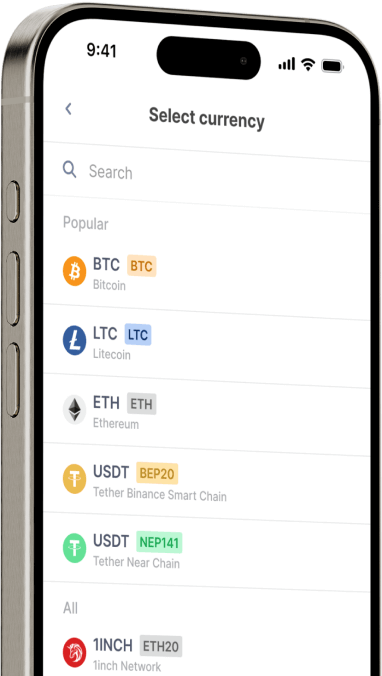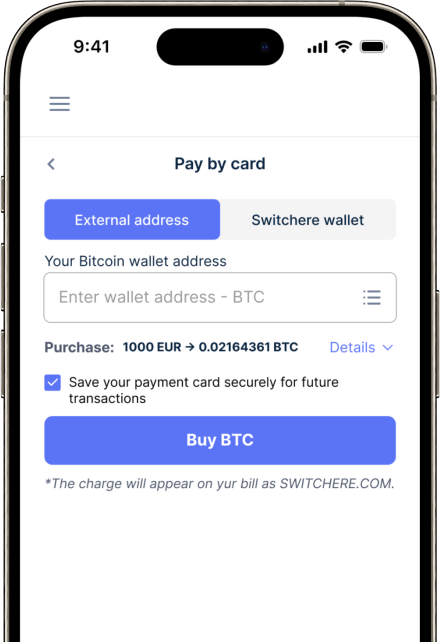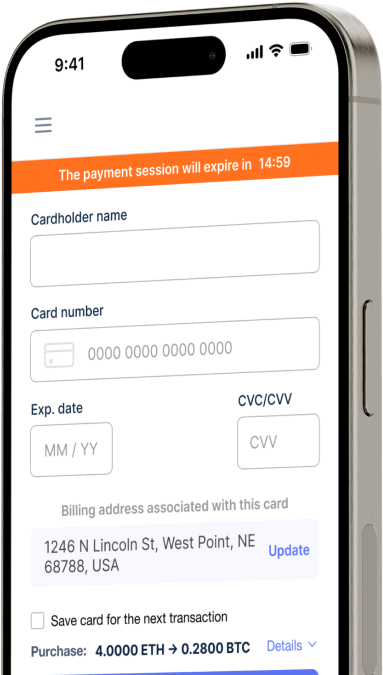Konvertieren
Brazilian Real (BRL) zu Celsius (CEL) Sofort
Kaufen Sie Celsius (CEL) mit Brazilian Real (BRL) einfach bei Switchere und profitieren Sie von schnellen und sicheren Transaktionen.
Über
Celsius (CEL)
Das Celsius Network mit seinem nativen CEL-Token entwickelte sich zu einer bedeutenden zentralisierten Finanzplattform (CeFi), die die Lücke zwischen traditionellem Banking und der Welt der digitalen Vermögenswerte schließen sollte. Ihre Hauptfunktion bestand darin, den Nutzern die Möglichkeit zu bieten, Zinserträge auf ihre Kryptowährungsbestände zu erzielen und kryptobesicherte Kredite aufzunehmen. Die Plattform funktionierte auf Depotbasis und verwaltete die Gelder der Nutzer, um durch Kreditvergaben an institutionelle Kreditnehmer Zinserträge zu generieren. Dieses Modell positionierte sie als benutzerfreundliche Alternative für Krypto-Inhaber, die ihre Vermögenswerte einsetzen möchten, ohne sich durch komplexe DeFi-Protokolle navigieren zu müssen.
Der CEL-Token war der Kern seines Loyalitäts- und Belohnungssystems. Als Utility-Token bot das Halten und Verwenden von CEL greifbare Vorteile innerhalb des Celsius-Ökosystems, wie z. B. Vorzugszinssätze sowohl für das Verdienen als auch für das Ausleihen. Nutzer konnten höhere Renditen auf ihre eingezahlten Vermögenswerte und niedrigere Kreditzinsen erhalten, wobei die Belohnungen oft wöchentlich in Form von CEL ausgeschüttet wurden. Diese Tokenomics-Struktur sollte die Loyalität der Nutzer fördern und die Nachfrage nach dem nativen Asset steigern. Die Plattform sah sich jedoch mit erheblichen operativen Herausforderungen und Marktdrücken konfrontiert, was letztendlich zu einem Insolvenzantrag nach Chapter 11 führte, der die Nutzer tiefgreifend beeinflusste und die Debatte über das Risiko in der CeFi-Kreditbranche neu prägte.
Andere 150+ Kryptowährungen für Brazilian Real (BRL) kaufen
Andere Münzen für Brazilian Real (BRL)
-
BRL zu ZRX
-
BRL zu 1INCH
-
BRL zu AAVE
-
BRL zu ACH
-
BRL zu ALGO
-
BRL zu TLM
-
BRL zu ANKR
-
BRL zu APE
-
BRL zu NFT
-
BRL zu API3
-
BRL zu APT
-
BRL zu ARPA
-
BRL zu AUDIO
-
BRL zu AVAX
-
BRL zu AVAX
-
BRL zu AXS
-
BRL zu BADGER
-
BRL zu BAL
-
BRL zu BNT
-
BRL zu BAT
-
BRL zu BNB
-
BRL zu BSW
-
BRL zu BSV
-
BRL zu BLUR
-
BRL zu BONE
-
BRL zu CTSI
-
BRL zu CELR
-
BRL zu CELO
-
BRL zu CEL
-
BRL zu LINK
-
BRL zu CHZ
-
BRL zu CHR
-
BRL zu C98
-
BRL zu COMP
-
BRL zu CFX
-
BRL zu PEOPLE
-
BRL zu CVX
-
BRL zu ATOM
-
BRL zu CTC
-
BRL zu CRV
-
BRL zu DAI
-
BRL zu DASH
-
BRL zu MANA
-
BRL zu DENT
-
BRL zu DGB
-
BRL zu DYDX
-
BRL zu XEC
-
BRL zu EOS
-
BRL zu ETC
-
BRL zu ENS
-
BRL zu ETHW
-
BRL zu FET
-
BRL zu FIL
-
BRL zu FLOKI
-
BRL zu GALA
-
BRL zu GNO
-
BRL zu ONE
-
BRL zu HBAR
-
BRL zu HOT
-
BRL zu HOOK
-
BRL zu ICX
-
BRL zu ILV
-
BRL zu IMX
-
BRL zu INJ
-
BRL zu ICP
-
BRL zu IOST
-
BRL zu IOTX
-
BRL zu JASMY
-
BRL zu JST
-
BRL zu KAVA
-
BRL zu KCS
-
BRL zu KSM
-
BRL zu KNC
-
BRL zu LDO
-
BRL zu LQTY
-
BRL zu LPT
-
BRL zu LOOKS
-
BRL zu LRC
-
BRL zu LUNA
-
BRL zu MKR
-
BRL zu MASK
-
BRL zu EGLD
-
BRL zu ALICE
-
BRL zu NEAR
-
BRL zu XEM
-
BRL zu NEXO
-
BRL zu NOT
-
BRL zu NMR
-
BRL zu OKB
-
BRL zu OMG
-
BRL zu ONT
-
BRL zu EDU
-
BRL zu OP
-
BRL zu OGN
-
BRL zu CAKE
-
BRL zu PAXG
-
BRL zu PENDLE
-
BRL zu DOT
-
BRL zu POL
-
BRL zu QTUM
-
BRL zu QNT
-
BRL zu RDNT
-
BRL zu XRD
-
BRL zu RVN
-
BRL zu REN
-
BRL zu RSR
-
BRL zu RLC
-
BRL zu RPL
-
BRL zu SFP
-
BRL zu SHIB
-
BRL zu SKL
-
BRL zu SXP
-
BRL zu STND
-
BRL zu STG
-
BRL zu XLM
-
BRL zu GMT
-
BRL zu STORJ
-
BRL zu STMX
-
BRL zu SUSHI
-
BRL zu SNX
-
BRL zu USDT (Polygon)
-
BRL zu USDT (AVAC)
-
BRL zu USDT (BEP20)
-
BRL zu USDT (ERC20)
-
BRL zu USDT (SPL)
-
BRL zu USDT (NEP141)
-
BRL zu USDT (FA2)
-
BRL zu USDT (TRC20)
-
BRL zu USDT (JETTON)
-
BRL zu XTZ
-
BRL zu GRT
-
BRL zu SAND
-
BRL zu TFUEL
-
BRL zu THETA
-
BRL zu RUNE
-
BRL zu TON
-
BRL zu TUSD (BEP20)
-
BRL zu TUSD (TRC20)
-
BRL zu TWT
-
BRL zu UOS
-
BRL zu UMA
-
BRL zu UNI
-
BRL zu USDC (Polygon)
-
BRL zu USDC (SPL)
-
BRL zu USDC (OP)
-
BRL zu USDC (BEP20)
-
BRL zu USDC (AVAC)
-
BRL zu USDC (ARB)
-
BRL zu USDC (ERC20)
-
BRL zu VET
-
BRL zu VRA
-
BRL zu WAXP
-
BRL zu WOO
-
BRL zu WLD
-
BRL zu WBTC
-
BRL zu WMINIMA
-
BRL zu XDC
-
BRL zu YFI
-
BRL zu YGG
-
BRL zu ZIL
Wie man Celsius (CEL) kauft
Häufig gestellte Fragen
-
Was ist die primäre Methode, um Celsius (CEL) mit brasilianischen Real (BRL) zu kaufen?
In der Vergangenheit erfolgte der Kauf von CEL mit BRL über eine Kryptowährungsbörse, die eine BRL-Fiat-On-Ramp anbot und den CEL-Token listete. Benutzer zahlten BRL über Methoden wie Pix- oder TED-Überweisungen ein und führten dann einen Handel im BRL/CEL-Orderbuch aus. Aufgrund des Chapter-11-Insolvenzverfahrens des Celsius Network ist der Handel mit CEL jedoch extrem risikoreich, und die Liquidität auf den verbleibenden Plattformen kann sehr gering sein. Überprüfen Sie immer den aktuellen Status einer Plattform und deren Unterstützung für dieses digitale Asset-Paar, bevor Sie eine Transaktion versuchen.
-
Was sind angesichts der jüngsten Ereignisse die größten Risiken beim Handel mit dem BRL/CEL-Paar?
Das Hauptrisiko ist die Insolvenz des Celsius Network. Der Handel mit CEL ist hochspekulativ, da sein zukünftiger Nutzen ungewiss ist und vollständig vom Ergebnis des Umstrukturierungsplans des Unternehmens und jeglicher Möglichkeit zur Wiedererlangung von Benutzergeldern abhängt. Weitere erhebliche Risiken sind eine extrem geringe Liquidität an den Börsen, was zu hoher Preisvolatilität und Slippage führt, sowie das Potenzial für ein Delisting von den wenigen verbleibenden Handelsplätzen. Jede BRL/CEL-Transaktion birgt ein erhebliches Risiko eines Totalverlusts des Kapitals.
-
Gibt es spezielle brasilianische Zahlungsmethoden wie Pix, die häufig für eine BRL-Fiat-On-Ramp verwendet werden?
Ja, für jeden Kauf digitaler Vermögenswerte mit brasilianischen Real sind mehrere lokale Zahlungsmethoden Standard. Pix ist aufgrund seiner sofortigen Verfügbarkeit rund um die Uhr am beliebtesten und daher äußerst effizient für die Einzahlung auf Konten bei brasilianischen Kryptowährungsbörsen. Weitere gängige Methoden sind TED (Transferência Eletrônica Disponível) für taggleiche Banküberweisungen während der Geschäftszeiten und seltener Boleto Bancário, das eine längere Bearbeitungszeit von 1-3 Werktagen hat. Alle regulierten Broker in Brasilien verlangen für diese Transaktionen die Einhaltung von KYC/AML-Vorschriften.
-
Was war der Hauptnutzen des CEL-Tokens innerhalb des Celsius-Network-Ökosystems?
Der CEL-Token war integraler Bestandteil des Wertversprechens des Celsius Network und wurde als Utility-Token für seine Krypto-Kredit- und Renditegenerierungsplattform konzipiert. Seine Hauptfunktionen umfassten die Bereitstellung höherer Belohnungen für die Einlagen der Benutzer (Verdienen in CEL), das Anbieten von Zinsrabatten für kryptogestützte Kredite und die Etablierung von Treuestufen, die bessere Zinssätze freischalteten. Das Modell sollte ein sich selbst verstärkendes Ökosystem schaffen, in dem das Halten und Verwenden von CEL greifbare finanzielle Vorteile innerhalb der Plattform bot.
-
Da CEL ein ERC-20-Token ist, was mussten Benutzer bei Blockchain-Transaktionen nach einem Kauf mit BRL beachten?
Nach dem Erwerb von CEL an einer Börse mit BRL erforderte die Auszahlung auf eine persönliche digitale Wallet eine Blockchain-Transaktion im Ethereum-Netzwerk. Als ERC-20-Token erfordert jede Übertragung von CEL von einer Wallet zu einer anderen die Zahlung von Gasgebühren in Ethereum (ETH). Benutzer mussten über ein ausreichendes ETH-Guthaben in ihrer Wallet verfügen, um diese Netzwerkkosten zu decken, die von den von der Börse erhobenen Handels- oder Auszahlungsgebühren getrennt sind.
-
Wie wichtig ist eine sichere digitale Wallet im Umgang mit Vermögenswerten wie CEL?
Die Verwendung einer sicheren, nicht-verwahrenden digitalen Wallet ist für die Verwaltung jeglicher digitaler Vermögenswerte, einschließlich CEL, von entscheidender Bedeutung. Sie gibt Ihnen die direkte Kontrolle über Ihre privaten Schlüssel, was bedeutet, dass Sie Ihre eigene Bank sind und nicht dem Gegenparteirisiko eines Ausfalls einer zentralisierten Plattform ausgesetzt sind, wie es bei Celsius Network der Fall war. Zu den Best Practices für den sicheren Handel gehören die Verwendung einer Hardware-Wallet für die langfristige Lagerung, die Aktivierung der Zwei-Faktor-Authentifizierung (2FA) und die Wachsamkeit gegenüber Phishing-Angriffen, um Ihre Vermögenswerte zu schützen.




